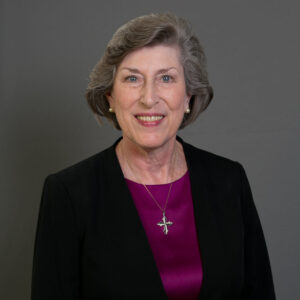
Readings:
Reading I: Acts 10:34a, 37-43
Psalm 118:1-2, 16-17, 22-23
Reading II: Col 3:1-4
Gospel: John 20:1-9
“And behold, there was a great earthquake” (Matt 28:2)
This week, our #WeeklyScriptureReflection is preached by Sr. Barbara Reid, OP, President of Catholic Theological Union. View below:
Two months ago, in the wee hours of the morning of February 6, a 7.8 magnitude earthquake rocked southeast Turkey near the Syrian border and took the lives of more than 46,000 persons. Many more are injured and millions are displaced and homeless. The earthquake toppled apartment buildings, schools, and hospitals, leaving communities and infrastructure in ruins.
I wonder how our brothers and sisters in Turkey and Syria will hear Matthew’s account of the empty tomb that will be read at the Easter Vigil this year with its unique detail describing how the placid daybreak of Easter morn is shattered with “a great earthquake” (28:2)? As well, in his version of the passion, Matthew says that just after Jesus utters his final words and breathes his last, “The earth shook, and the rocks were split. The tombs also were opened, and many bodies of the saints who had fallen asleep were raised” (Matt 27:51-52).
While the earthquakes of our day cause massive loss of life by entombing people in the rubble of collapsed buildings, the earthquakes in the Gospel have the opposite effect: they split open tombs and raise to new life those held in the grip of death. They signal tectonic shifts made possible for humankind through God’s action in Christ.
Foremost is the shift away from paralyzing fear to an empowering joy. At the empty tomb, the angel’s first words to the women are “Do not be afraid!” (v. 5). The centurion and those keeping watch over the crucified Jesus, were terrified at the earthquake and what took place after his death (27:54), as were the guards at the tomb, who “were shaken with fear” so that they “became like dead men.” Not so Jesus’ disciples. The angel directs them away from seeking Jesus the crucified so that they can experience him as risen. God’s messenger invites them to come and see the place where he lay, but then directs them to go out quickly. They are not to stay in the place of death. They are not to build a monument to the martyr Jesus and glorify his death but rather to announce and live the new life that bursts forth from the empty grave.
Harboring some fear, they follow the angel’s instructions, and let joy overtake them. Then Jesus himself appears to them and reiterates what he said to them so often during his earthly ministry: let go the death-grip of fear (Matt 8:26; 10:26, 28, 31; 14:27; 17:7). They can move from fear to joy, when they come to know that Jesus never abandons his earthquaked people and that he is able to transform even the most brutal effects of violence through forgiving love. It is not only in this one definitive act of raising the crucified Christ that God exercises life-giving power, but in every act of forgiveness and in every move toward reconciliation enacted by Jesus’ disciples as we continue the mission he has entrusted to us.
Easter is not only about what happened to Jesus but, to a great degree, it is about what happens to us as we live lives that are transformed by his rising. In Paul’s letter to the Colossians, which we hear as our second reading on Easter morning, Paul speaks about Christians being so united with Christ that when he dies, we die with him. And when he is raised, so we too. Earlier in Colossians (1:18), Paul speaks of Christ as “firstborn from the dead.” What God does for our brother Jesus, God will do for us as well. And not only for us, but for the whole of creation. In his letter to the Romans, Paul says all creation is “groaning in labor” (Rom 8:22)—God is rebirthing not only humankind, but the whole of the cosmos.
We don’t need to wait for death to experience resurrected life. We see it happen again and again that when there is massive tragedy, we become, for the most part, more kind and generous toward one another. We forget our own woes and rally around the most vulnerable and needy. We become more connected to and bonded with one another in the face of a common adversity. Every time we stand with and love the crucified peoples of our day, as did Mary Magdalene and the other women at Jesus’ cross and dare to venture into the tomb, the places of death, the Risen One is alive in us, breaking the hold of death-dealing powers.
Even now, God is moving the tectonic plates held in place by fear to break open our hearts to a new outburst of divine love this Easter. What will our world look like as the aftershocks of joy and love ripple through our cosmos?